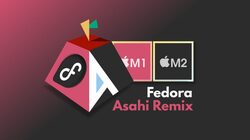Fedora Asahi Remix Delivers Major Improvements
Fedora Asahi Remix, a notable variant of Fedora Linux tailored for Apple Silicon hardware, has consistently evolved since its first stable release, making waves in the tech community.
As the distro continues bridging the gap between Linux and Apple hardware, the developers have been making significant efforts in this direction, with the latest batch of updates really impressive. Here’s what it’s all about.
Notebookcheck:
-
Asahi Linux improves battery life and graphics features on Apple Silicon Macs
The first stable version of Fedora Asahi Linux 39 with KDE Plasma as the standard desktop is barely a month old and there is already news from the Apple-silicon-exclusive Linux distribution. In particular, the improved HDMI support for Apple M1 and M2 chips, updates to the graphics driver and an extended battery life make people sit up and take notice.
The Register:
-
Asahi Linux team issues promising update on efforts to conquer Apple Silicon
The Asahi Linux team has followed up the release of Fedora Asahi Remix with a post detailing the progress of the project to bring Linux to Apple silicon.
First up is HDMI support and the chore of supporting Apple's M1 and M2 chips, including the Pro, Max, and Ultra variants. Apple tends to reuse most of the hardware logic between SoCs, yet the M2-series desktop devices took a while to display output. Getting display support running for the M2 Pro and Max laptops did not present too much of a problem but the desktop hardware, such as the M2 Mac Mini and Mac Studio, was more of a challenge.
The developers explained: "Unlike M1, HDMI output on M2+s is no longer managed by the DCP [Display Controller Processor] firmware, specifically DCP no longer handles the complete eDP -> DP2HDMI setup."

